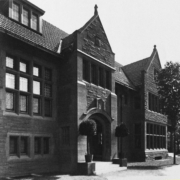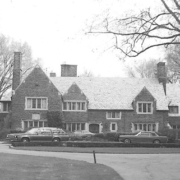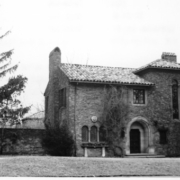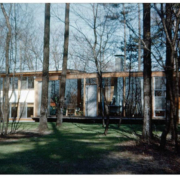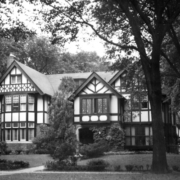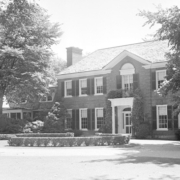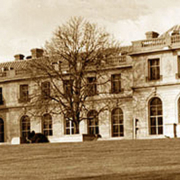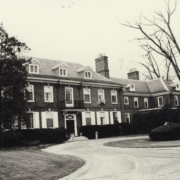Historical Architecture of Grosse Pointe – The History of Rose Terrace
Last week we presented the story of one of Albert Kahn’s public buildings, the Vernier school, completed in 1916. Originally located at 36 Vernier Road, it was razed in 1994. This week we conclude our series on the work of Albert Kahn as we briefly review arguably one of the most noted residences he created Rose Terrace, followed by the history of the property, which includes Rose Terrace II, and finally the Rose Terrace Subdivision.
Rose Terrace #1
Rose Terrace was completed in 1910, for Horace Elgin Dodge for an estimated $4 million (around $130m today). It was razed in 1934. Based on an article in the Detroit News (June 2000) we understand the name “Rose Terrace” came from the collection of roses on the grounds that were a favorite of Mrs. Anna Dodge.
The stunning property was located at 17840 E. Jefferson. Prior to its commission Horace E. Dodge had purchased land adjoining the former Detroit Country Club (demolished in 1907) on Jefferson Avenue, close to the water. He then hired Albert Kahn to create a grand residence. The house was constructed of rugged red sandstone with a green tile roof. The design featured banks of large, mullioned windows that provided a perfect of Lake St. Clair and of the private dock where Horace and his wife Anna moored their yacht, the Delphine (named after their daughter). The 45-feet long launch was reportedly used by Mr. Dodge to commute to downtown Detroit. The photos are courtesy of: Legacy of Albert Kahn by W. Hawkins Ferry.
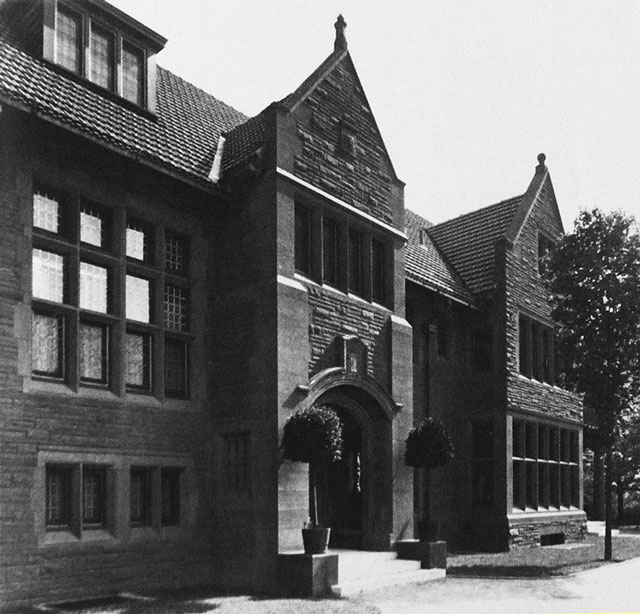

The interior of the property, as depicted by the photos below, was an opulent affair – filled with wood paneling, decorative ceilings, and intricate carvings. Images are courtesy of: The Grosse Pointe Historical Society.



At the rear of the property the lush formal gardens were accessed through a large porch that had Tuscan columns and a huge balustrade. Photos are courtesy of: The Grosse Pointe Historical Society and the book – Legacy of Albert Kahn by W. Hawkins Ferry.


Horace Elgin Dodge was born in Niles, Michigan in 1868. It is reported that Horace, and his elder brother John were inseparable as both children and adults. In 1886, the Dodge brothers moved to Detroit where they took jobs at a boilermaker plant. Eight years later, in 1894, they went to work as machinists at the Canadian Typograph Company in Windsor, Ontario. In 1896, Horace Dodge married Anna Thompson, who was born in Scotland. Together they had two children Horace Jr. and a daughter Delphine.
In 1920, Rose Terrace was rated as one of the finest homes in America. That same year, having traveled to New York in January to attend an Auto show, both the Dodge brothers passed from pneumonia, contracted during the influenza epidemic – John passed in January 1920, and Horace in December.
Six years later, in 1926, Horace’s widow, Anna Thompson, now one of the world’s wealthiest women, married former actor Hugh Dillman. Shortly after Mrs. Dodge and her new husband decided to build a new mansion – “Rose Terrace II”. The original Rose Terrace was razed in 1934.
Rose Terrace #2
Mrs. Dodge commissioned Horace Trumbauer, a prominent architect in Philadelphia to design her new home, Rose Terrace II – to be set on the 8.8-acre site. Mr. Trumbauer was a noted designer of the Gilded Age known for creating residential manors for the wealthy. For “Rose Terrace II” is believed that Mrs. Dodge asked Trumbauer to design an enlarged version of a home in Newport called “Miramar” – a French-style Louis XV château that Trumbauer had completed in 1911, for George Dunton Widener, a prominent businessman in Philadelphia. “Miramar” was a house Mrs. Dodge greatly admired, but she wanted her version to be even bigger.
Construction began in 1931 – “Rose Terrace II” was finally fully finished, furnished, and decorated four years later in 1935. Costing around $7m (around $133m today) – it remains the most expensive house ever built in Metropolitan Detroit. The French Louis XV chateau styled residence was constructed from brick, and surfaced with limestone, its mansard roof was sheathed in copper. Upon completion the mansion was close to 42,000 sq ft, had 75 rooms (including 42 main rooms), 15 fireplaces, 40 French doors, 37 sofas, 615 silk lampshades and more than 100 tables. A large marble staircase and an elevator connected the main and second floors. Source and images: Wikipedia, lemacks.com, townandcountrymag.com, and schoolfieldcountryhouse.com.
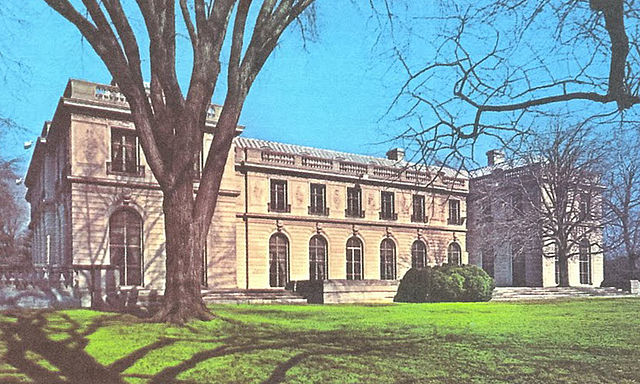

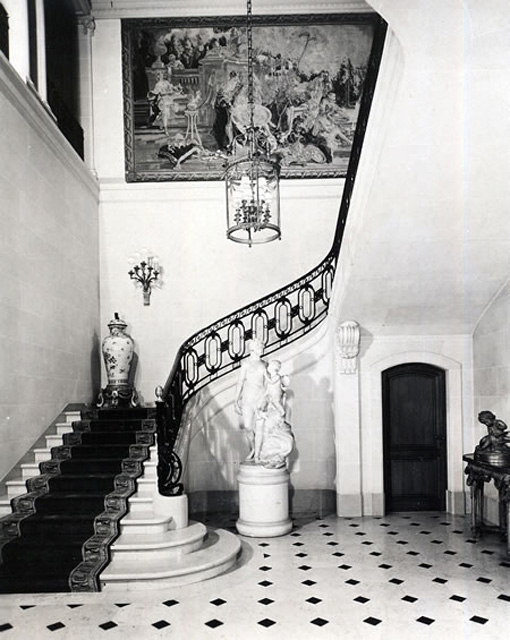
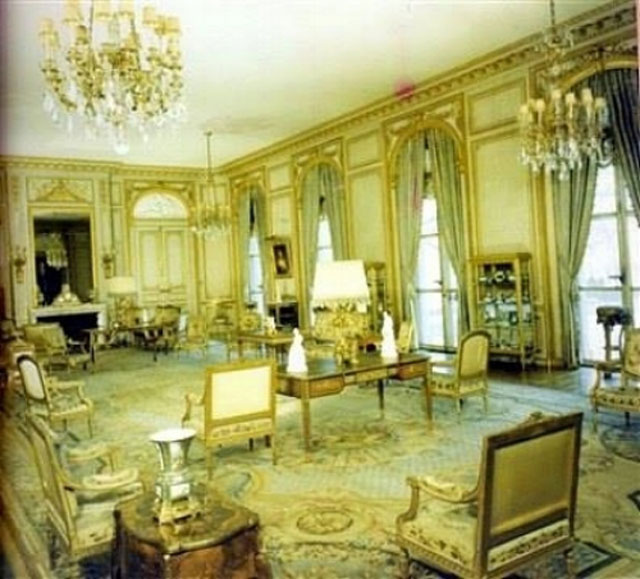
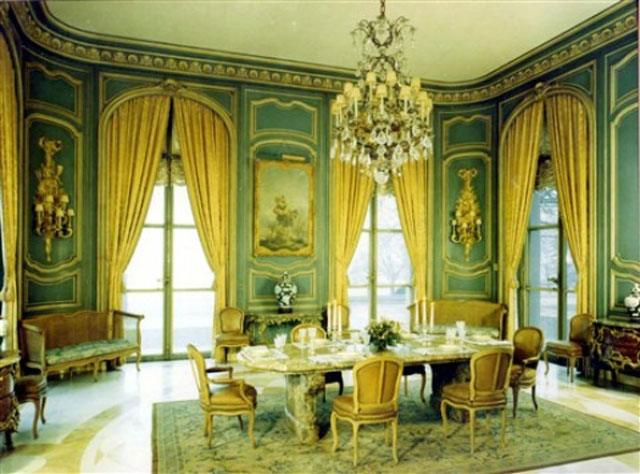
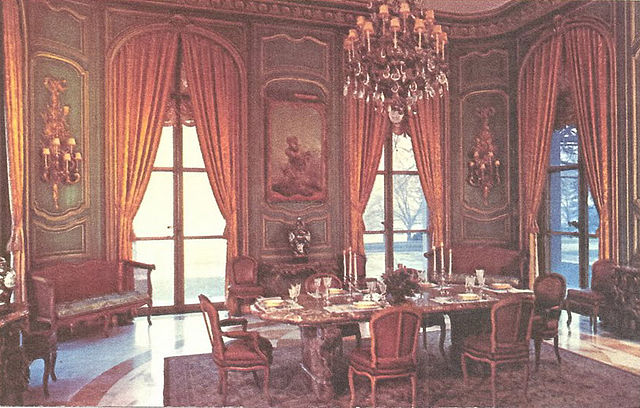
It is acknowledged all the rooms on the main floor had 18.5’ ceilings with a multitude of spaces for entertaining including two sitting rooms, a music room/ballroom, a card room, and a formal dining room. The music room measured 62’ x 32’ sq ft and contained a bar room, card room, and a pipe organ that was originally purchased by Horace Dodge for “Rose Terrace I”. The attic had space for the servant’s quarters, including an apartment for the housekeeper, a valet’s room, twelve maids’ rooms, and six rooms for male servants. The basement of the house was the location of the servants’ dining room, an ice cream parlor, a flower room, a wine cellar, a gymnasium, and storage vaults for furs, rugs, and silver. Source: Wikipedia.
It is alleged Mrs. Dodge spent two years in Europe collecting 18th century French art treasures to fill the home, receiving advice from noted dealer Lord Joseph Duveen who in turn spent over $2.5m on items that included the purchase of paintings by Gainsborough, Boucher and Van Dyck. Source and images: Grosse Pointe News, lemacks.com, townandcountrymag.com, and schoolfieldcountryhouse.com.
The landscaping was designed by nationally prominent landscape architect Ellen Biddle Shipman, known for her formal gardens and lush planting style. At the end of the garden was the 20’ x 78’ sq ft boat pavilion and a huge pier that was large enough to accommodate what was at the time the largest yacht in the United States – The Delphine II that was 257 feet long.
Anna Thompson Dodge resided in “Rose Terrace II” until her death at the property in 1970, aged 100. Following her death, much of the contents were sold at auction held by Christie’s in 1971, and the property then sat empty for several years while a private buyer was found. However, there were no buyers who wanted to maintain a house that size and despite efforts to save the mansion (for its historical significance) the property was demolished in 1976, and the land subdivided.
When Rose Terrace was sold it was the biggest estate to be listed for sale for years. It was reported “six million dollars’ worth of Mrs. Horace Dodge’s finest belongings were flown to London, England for sale, and one million dollars’ worth of Jewelry was sold in Geneva, Switzerland. The “leftovers” were purchased for $650,000 in 1976. “We sold the driveway, the bushes, the trees, rose arbor, kitchen plumbing, floors and paneling, even the roof! recalled Frank Boos of Boos Galleries, Bloomfield Hill.” Source: Heritage Magazine (June/July 1986).
Rose Terrace Subdivision
The newly formed Rose Terrace subdivision became home to a figure-eight shaped dead-end street bearing the name of the old mansion(s), with 25 new homes. The houses, created in a range of architectural styles, were constructed over several years, from 1978 through to the mid 1980’s. They are prestigious homes, located close to the water with four properties enjoying a stunning view of Lake St. Clair. A view that was once enjoyed by Horace Dodge and Anna Thompson.
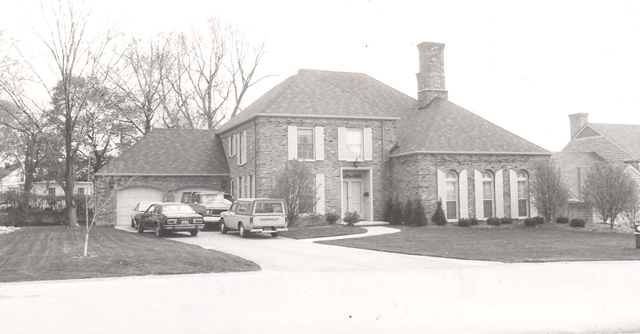
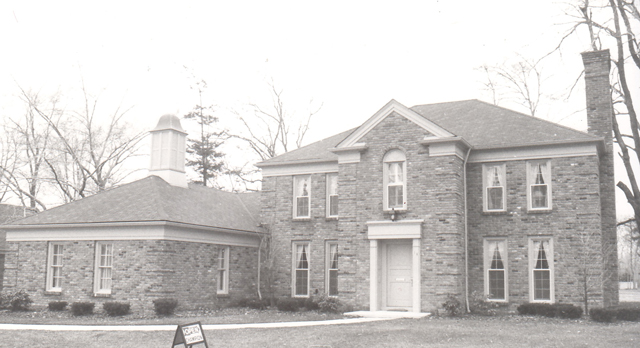

The Rose Terrace mansions (1 & 2) were arguably two of the most acclaimed residences to be designed, built, and razed, in all the Grosse Pointe communities. And two of the finest residences to have been built in the United States.
*Photos courtesy of the Higbie Maxon Agney archives unless stated.
** Research, information, and data sources are deemed reliable, but accuracy cannot be fully guaranteed.
Written by Katie Doelle
Copyright © 2023 Katie Doelle

